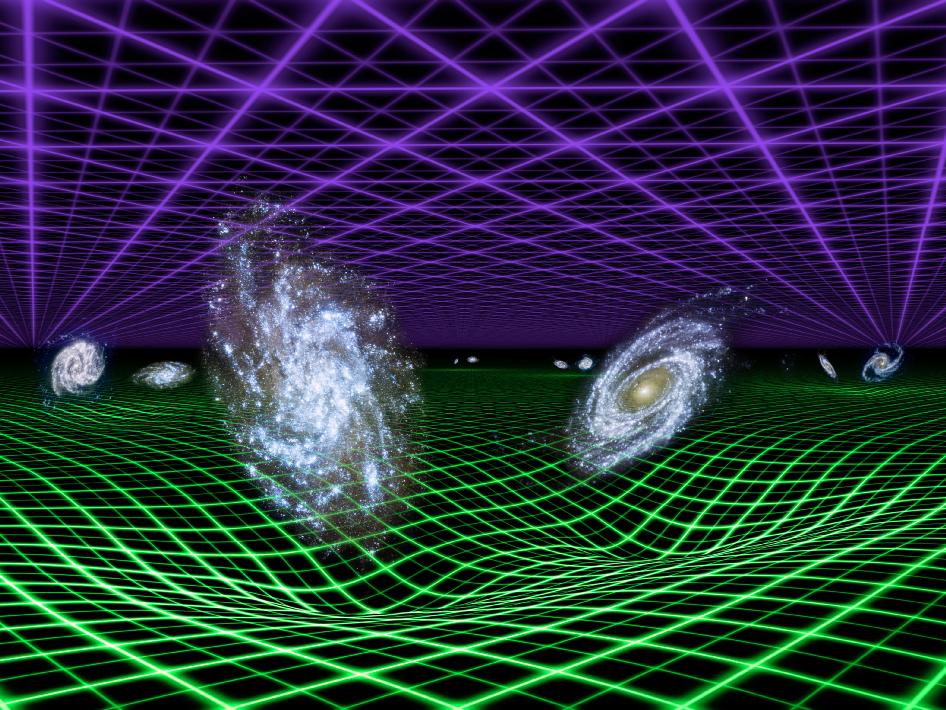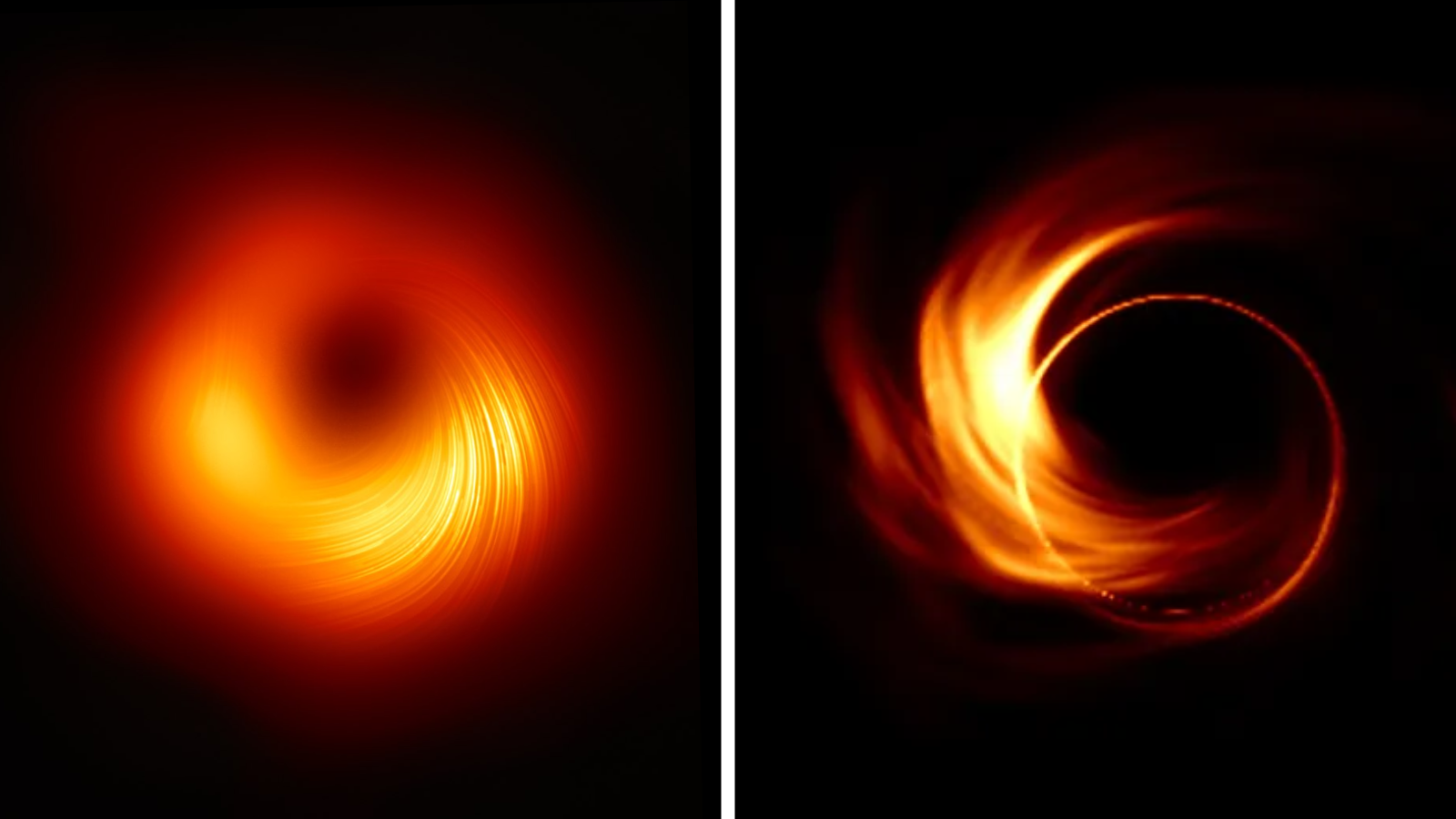There's no denying the tremendous predictive power of Albert Einstein's 1915 theory of gravitation and general relativity, however, the theory still suffers from inconsistencies when it comes to calculating its effect over vast distances. New research suggests that these discrepancies may be the result of a “cosmic imbalance” in gravity itself.
In the 109 years since it was first formulated, general relativity has remained the best description of galactic-scale gravity; Experiments have repeatedly confirmed its accuracy. This theory has also been used to predict aspects of the universe that would later be confirmed by observation. These include the Big Bang, the existence of black holes, gravitational lensing of light, and tiny ripples in spacetime called gravitational waves.
However, like the theory of Newtonian gravity that surpassed it, general relativity may not give us the full picture of this mysterious force.
“This model of gravity has been essential for everything from the Big Bang theory to imaging black holes,” Robin Wen of the University of Waterloo's Department of Mathematical Physics said in a statement. “But when we try to understand gravity at the cosmic level, at the level of galaxy clusters and beyond, we encounter clear contradictions with the predictions of general relativity.”
Related: Quantum gravity could help finally unify quantum mechanics with general relativity
“Gravity becomes weaker by about one percent when dealing with distances of billions of light-years,” Wen said. “We call this discrepancy a ‘cosmic glitch.’ It is as if gravity itself has completely stopped matching Einstein’s theory.”
The cosmic disruption described by the team would require a change in a value called the gravitational constant. This change will occur as calculations approach the “hyperhorizon,” or the farthest distance light has been able to travel since the universe began.
The team says this modification can be made by adding one extension to the standard cosmological model. This model is known as the lambda model of cold dark matter. Once completed, the modification should eliminate discrepancies in measurements at cosmological levels without affecting current successful uses of general relativity.
What is general relativity and can it be wrong?
The discovery of general relativity was so revolutionary, because instead of describing gravity as a mysterious force, he postulated that gravity arises from the curvature of the fabric of space and time, united as a single entity called “space-time.” Einstein realized that this curvature is formed by objects with mass.
Imagine placing balls of increasing mass on a stretched rubber sheet. A tennis ball would make a small, almost imperceptible dent; A cricket ball would create a more noticeable dent; The bowling ball would induce a huge curve that would likely attract everything else on the sheet toward it. It's the same concept with objects in space, although the curvature of spacetime exists in four dimensions, so there are some key differences. However, moons have less mass than planets, planets have less mass than stars, and stars have less mass than galaxies, so the gravitational effects of these celestial bodies increase respectively.
Einstein's theory of gravitation served as a successor to Newton's, although the latter still serves well on terrestrial scales and is accurate enough to deliver rockets to the Moon. However, Einstein's theory could explain things that Newton's theory could not, such as Mercury's strange orbit around the Sun.
It wasn't exactly Newton mistake Regarding gravity, he was not right about the scales of planets, stars, and galaxies.
But is general relativity wrong?
Well, maybe not. As a theory, it was very accurate in predicting aspects of the universe that we knew nothing about. For example, the first image of a black hole taken by the Event Horizon Telescope was revealed to the public in April 2019. This image was somewhat shocking because of how similar the appearance of the supermassive black hole M87* was to predictions of general relativity.
However, scientists realize that there are some problems with general relativity that may eventually require revision. For example, the theory does not combine with quantum mechanics; Our best description of physics is at fundamental levels smaller than the atom. This is mainly because there is currently no quantum theory to describe gravity.
So, modifications to general relativity at some point in order to “extend” its scope to the smallest scales of the universe — and according to this team, the largest scales — seem inevitable.
For decades, researchers have tried to create a mathematical model that would help general relativity overcome its contradictions, and applied mathematicians and astrophysicists at the University of Waterloo have been deeply involved in this endeavor.
Change general relativity? What!
If the idea of revising general relativity sounds like heresy, consider that this would not be the first time the theories associated with it have had to be modified.
Shortly after Einstein first presented the theory, he and others expanded it to develop an equation to describe the state of the universe. As a result of general relativity, this equation predicted that the universe should change. The problem with this was the scientific consensus at the time that the universe was static. Although Einstein was no stranger to transforming the status quo into a state of constant change, he happened to agree with this unchanging cosmic picture.
To ensure general relativity's prediction of a static universe, Einstein added a “correction factor” that he later described as “his greatest blunder”: this is known as the cosmological constant, represented by the Greek letter lambda. The constant would be removed from thought when Edwin Hubble convinced Einstein that the universe was not static. He said it is expanding. As far as we know today, Hubble was actually right.
However, the lambda will actually return. It will begin to serve a different function at the end of the 20th century, when astronomers discover that the universe is not only expanding, but that it is doing so at an accelerating rate.
“Almost a century ago, astronomers discovered that our universe was expanding,” Niayesh Afsharid, a professor of astrophysics at the University of Waterloo and a researcher at the Ocean Institute, said in the statement. “The farther away galaxies are, the faster they move, to the point where they appear to be moving at close to the speed of light, the maximum allowed by Einstein's theory. Our findings suggest that, on those same scales, Einstein's theory may also be not enough.”
The University of Waterloo team's proposal of a “cosmic glitch” modulating gravity over vast distances extends Einstein's mathematical formulas to address this without “toppling” the theory.
“Think of it as a footnote to Einstein’s theory,” Wen said. “Once you reach the Cosmic Realm, terms and conditions apply.”
The researchers behind this cosmic glitch theory suggest that future observations of the large-scale structure of the universe and a field of global “fossil” radiation called the cosmic microwave background (CMB) from an event that occurred shortly after the Big Bang could shed light on whether cosmic glitches in Gravity is responsible for the current “cosmic tensions”.
This could include why quantum theory gives the value of lambda which is an amazing factor of 10¹²¹ (10 followed by 120 zeros) which is larger than astronomical observations show (no wonder some physicists call it “the worst theoretical prediction in the history of the universe”). Physics!”).
“This new model may be just the first piece of evidence in the cosmic puzzle we are beginning to unravel across space and time,” Afshordi concluded.
The team's research appears in Journal of Cosmology and Astroparticle Physics.

“Beer aficionado. Gamer. Alcohol fanatic. Evil food trailblazer. Avid bacon maven.”



